Call US
24/7
Free Confidential case Evaluation
(813)922-0228Call US
24/7
Free Confidential case Evaluation
(813)922-0228Loading...


You don’t think about the pavement when you're riding. Not really. You know it’s there, but your mind isn’t on the ground. It's on the wind. On the rhythm. On the freedom. Until it isn’t.
Florida doesn’t cushion the fall. It doesn’t offer the quiet security of no-fault protections to bikers. No warm guarantees. Just asphalt, sirens, and questions nobody prepared you for.
How bad is it? What happens now? And the one question that always comes later, What is a wrecked life worth in dollars and cents? Let’s start there…
Florida has long been a haven for motorcyclists. Year-round sunshine, flat open highways, and a strong riding culture make it one of the most motorcycle-friendly states in the country, at least on the surface.
However, beneath that freedom is a far less forgiving reality. Florida may offer the ride, but it also carries some of the highest crash and fatality rates in the U.S. for motorcyclists. Whether it’s tourists unfamiliar with the roads, distracted drivers, or high-speed sprawl on highways like I-75 and US-1, riders here face unique risks every time they gear up.
"In 2022, Florida saw over 8,600 motorcycle crashes, with more than 600 resulting in death."
— Florida Department of Highway Safety and Motor Vehicles
This isn’t about scaring people away from riding — it’s about facing the road with both eyes open. Because while the wind and the freedom are real, so are the consequences when something goes wrong.
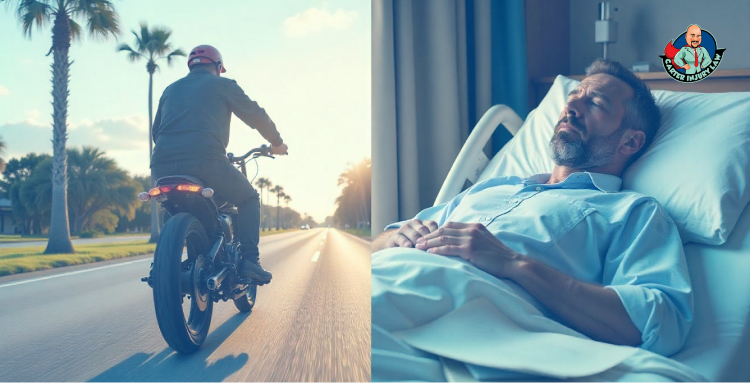
Florida operates under a no-fault insurance system but there’s a catch. While drivers of cars and trucks are required to carry Personal Injury Protection (PIP), motorcyclists are left out of that equation entirely. The law doesn’t extend PIP coverage to motorcycles, which means riders don’t get immediate access to medical benefits through their own insurance after a crash.
So, what does that actually mean in practice?
It means that if you’re injured in a motorcycle accident, even if it wasn’t your fault, there’s no automatic help for your hospital bills. No fast track compensation for lost wages. Instead, you’re left to pursue a claim against the at-fault driver, assuming they even have insurance… or assets to recover from.
And that assumption? It’s a risky one in Florida.
"Motorcyclists are 28 times more likely to die in a crash than passengers in cars."
— National Highway Traffic Safety Administration
For motorcyclists, this creates a dangerous gap. You’re exposed twice; once on the road and again in the aftermath, when coverage you assumed would be there… isn’t.
There’s no universal price tag for pain. The numbers vary based on how badly you were hurt, how much time you’re out of work, and how strong the evidence is around who caused the crash.
Here’s a general breakdown:
Minor injuries (like sprains, soft tissue damage, or road rash): Typically fall between $10,000 to $30,000
Moderate injuries (fractures, surgery required, some missed work): Range from $30,000 to $75,000
Severe injuries (traumatic brain injuries, spinal damage, permanent disability): Often valued at $100,000 to $500,000+
Fatal accidents or wrongful death claims (especially involving a primary wage earner): Can exceed $1 million, depending on the case
Each case is shaped by its own set of facts. The insurance limits involved, the long-term impact on your health and livelihood, and even the quality of legal representation you choose. A cracked rib and 6 months of missed wages can settle for more than a broken wrist, depending on how the injury affects your life.
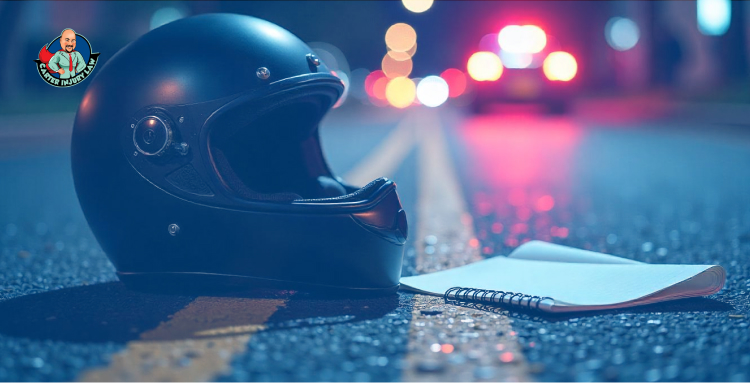
There isn't a single golden rule when it comes to valuing a motorcycle accident claim but certain factors consistently move the dial. In Florida, the outcome of your case depends not just on what happened, but on how the law applies to the details of your story.
Let’s break it down:
Liability and fault
Florida follows a pure comparative negligence rule, which means even if you were partly at fault, you can still recover damages but your payout is reduced by your percentage of fault. So if you’re awarded $100,000 but were 30% responsible, you’d receive $70,000.
Severity of the injury
Broken bones heal. Traumatic brain injuries don’t always. The more long-term or permanent the damage, the more compensation your claim may demand. Especially if it limits your ability to live or work independently.
Medical expenses
Not just what you’ve paid but what your doctors say you’ll need going forward. That includes physical therapy, surgeries, prescriptions, and even mobility devices or home modifications.
Lost income & diminished earning capacity
If you’ve missed work, that gets added to your claim. But if you can’t return to the same job or work at all, the financial impact grows dramatically.
Pain and suffering
There’s no bill for chronic pain or anxiety, but Florida law allows for these damages to be included in serious cases. The more disruption to your daily life, the more weight this factor carries.
Insurance policy limits
Even a million-dollar injury won’t result in a million-dollar settlement if the at-fault driver only carries the state minimum unless they have significant personal assets or you’ve purchased uninsured/underinsured motorist coverage.
Two people could suffer the same injury but walk away with vastly different results—all because of how these factors stack up. The law offers a structure, but the outcome depends on the specifics of your case.

Here’s the part no one tells you at the dealership, you can follow every rule on the road, wear your helmet, stay visible, and still end up in a hospital bed with no coverage for your injuries. That’s because Florida’s insurance system has a blind spot when it comes to bikers.
And it’s not just PIP that’s missing. The real danger lies in what other drivers are carrying or not carrying.
If someone hits you and they’re uninsured (or carry the bare minimum), you could be left holding the bag for tens of thousands in medical bills.
Therefore, we start with a thorough investigation, reviewing police reports, analyzing damage, interviewing witnesses, and pulling surveillance footage if it exists. Every detail counts because the burden of proof is on you, the injured party.
We work closely with:
Medical experts who can document your injuries and project long-term care needs
Accident reconstructionists who help explain how and why the crash happened
Insurance adjusters, not as adversaries but as negotiators who need to know you’re prepared to go the distance
And most reputable injury firms, including ours, operate on a contingency fee basis. That means you don’t pay anything up front. We only get paid when we win your case.
The law can’t undo the accident. However, it can offer something that helps you begin again with the right hands guiding the way.
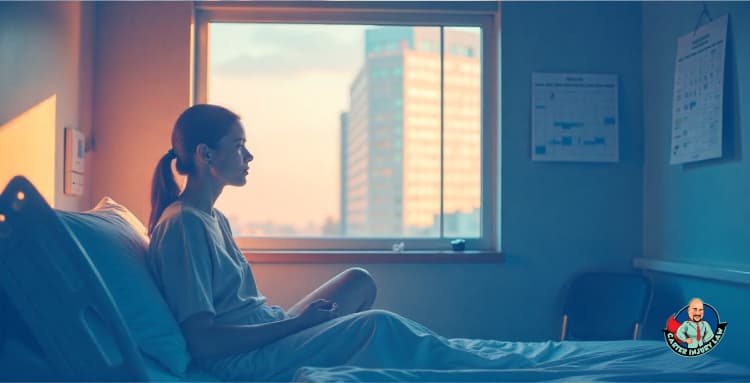
No one wakes up thinking today will be the day everything changes. But then it does. One careless moment, one unexpected injury and suddenly, your world shifts.
In the days that follow, there’s pain, confusion, paperwork… and silence. A quiet question begins to creep in: What now? Or, more urgently, how long do I have before I lose the opportunity to file a personal injury claim?
It's odd how time passes after an accident. You feel like you should have plenty of it, until someone tells you otherwise.
The truth is, Florida’s injury laws are not as generous with time as they used to be. And that’s not just a legal technicality; it’s a detail that could decide whether your claim stands or falls.
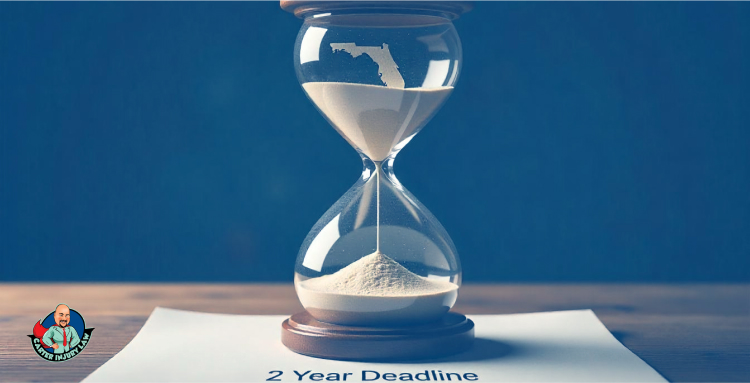
If your injury happened on or before March 24, 2023, the time you had to file a personal injury claim was a little more generous. Florida law gave injured individuals up to 4 years to bring a lawsuit against the party responsible for their injuries. That was the general rule.
But of course, not every situation falls under the same umbrella.
Wrongful Death Claims Were Treated Differently
In cases where the injury resulted in the tragic loss of life, the timeline was shorter. The law allowed 2 years from the date of death to file a wrongful death lawsuit. These cases tend to move faster, not just legally, but emotionally too. So the state gave less time to act.
Medical Malpractice Had Its Own Clock
Now, if your case involved medical negligence—say a doctor’s mistake or a misdiagnosis—the deadline was also 2 years. These types of claims are complex and often require expert testimony, so that shorter window made it all the more important to get legal guidance early on.
Uninsured Motorist Claims Followed Contract Law
Then there’s the situation where you’re dealing with your own insurance company—specifically your uninsured motorist coverage. These cases are handled a bit differently because they’re based on your policy contract. In those situations, you typically had up to 5 years to file a claim. That extra time reflected the nature of a contractual dispute rather than a traditional injury lawsuit.
For Most Injuries, You Had Four Years
So if your case involved something like a car accident, a slip and fall, or any type of injury caused by someone else’s carelessness, that four-year window was the standard. It gave people enough time to recover, assess their situation, and figure out the next steps.

On March 25, 2023, the clock started ticking a little faster for injury victims in Florida. That’s when a major change in the law took effect, and it’s one that anyone filing a personal injury claim needs to know.
The Statute of Limitations Was Cut in Half
Before this date, most people had four years to file a lawsuit after an injury. But under the new Florida statute of limitations for personal injury claims, that window was reduced to just 2 years.
That means if you were injured on or after March 25, 2023, you now have 2 years from the date of the incident to take legal action. Whether it was a car accident, trip and fall, or any injury caused by someone else’s negligence—that two-year deadline applies.
Not sure how this affects your case?
Attorney Rob Johnson breaks it down clearly in this short video, so you know exactly what to expect:
Why This Change Matters for Injury Victims
It may not seem like a significant difference at first. However, in the legal world, two years can pass quickly—especially when you're focused on healing, dealing with insurance, and getting your life back on track.
When it comes to filing a personal injury claim, time is both a deadline and a strategy. The earlier you take action, the more control you have over the direction of your case.
Evidence Doesn’t Wait
The longer you wait, the harder it becomes to gather the proof you need. Video footage can be erased, scene conditions change, and critical documents can go missing. Even things like vehicle damage or unsafe property conditions might get repaired—eliminating key pieces of your case.
People Forget Details
It’s natural. Witnesses who were sharp and certain at the time of the accident might start to second-guess themselves months later. Their memory fades, and their confidence in what they saw weakens. The sooner statements are taken, the more reliable they are—and the stronger your case becomes.
Insurance Companies Move Fast And So Should You
Insurance adjusters often reach out quickly after an accident, sometimes before you’ve even seen a doctor. Why? Because they know the sooner they catch you off guard, the better chance they have of minimizing your claim. Acting fast levels the playing field.
The sooner we step in, the sooner we can secure the evidence, talk to witnesses, and start building your case.
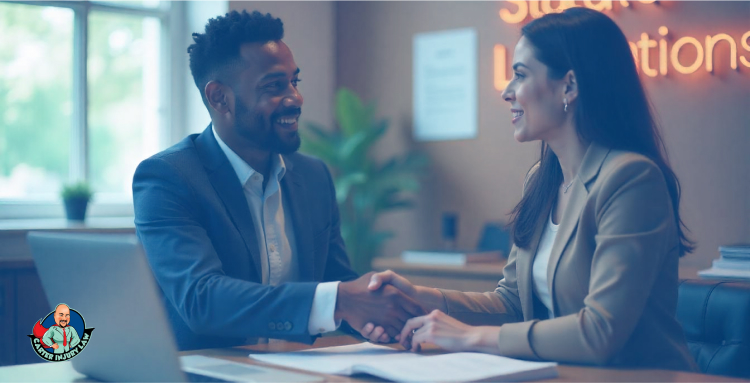
The majority of people don't prepare for mishaps. And when they happen, time becomes a strange thing. It speeds up and slows down all at once. One moment, you're just trying to catch your breath. And then you're told that you might have already waited too long.
That’s why guessing is never the answer. Laws change. Exceptions exist. And what applied to someone else’s case may not apply to yours.
More than 50% of personal injury plaintiffs don’t pursue legal action within the statute of limitations because they don’t realize how short the window is.
Source – Florida Bar Journal, 2023
And just like that, the door can close before you even know it was there.
That's what we say to help you, not to frighten you. Because if you were hurt and you’re still unsure whether you have a claim, the best thing you can do is ask. A simple conversation could mean the difference between recovery and regret.
Carter Injury Law is here to help you figure that out. Call us today at 813-922-0228 or visit carterinjurylaw.com. Let’s find out what time you have before it slips away.
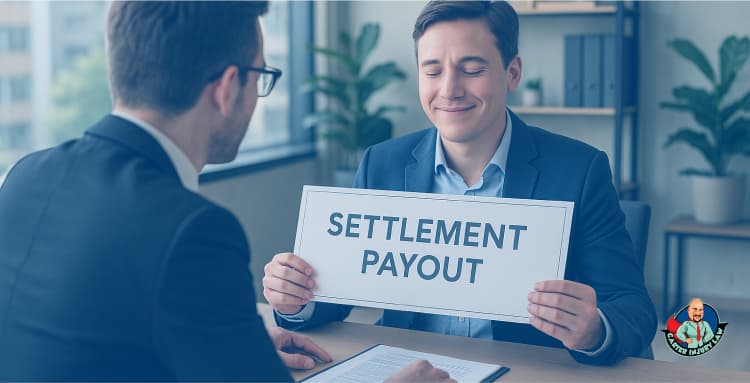
There’s a quiet kind of uncertainty that comes after the storm. You’ve fought your case, stood your ground, and won. But now what? How are personal injury settlements paid out, really? It's a quiet question that just sits there, waiting for clarity. Because winning a case is one thing. Getting paid is another.
Most people imagine that a check just arrives one day. No strings, no steps. However, the truth is more nuanced. Your settlement is more than just a number; it is a process that breaks down what you owe, what is deducted, and what ultimately ends up in your hands. And understanding that process means understanding your power.
Let’s walk through it together.
A personal injury settlement is the compensation you receive after you’ve been hurt due to someone else’s actions. Think of it as a way to make up for the physical, emotional, and financial toll an injury has taken on your life. It's not just about paying for your medical bills; it's about addressing lost wages, pain and suffering, and other damages that affect your well-being.
There are a few types of settlements that may come up in a personal injury case. One common option is the lump sum settlement. This is typically how most personal injury cases are resolved. Essentially, you receive a single, one-time payment for everything your case covers—from your medical bills to any wages you've lost due to the injury.
Another type is a structured settlement, where payments are made over time, but we won’t get into that today. For now, we’ll focus on the lump sum, because it’s the most straightforward and the one you’ll likely encounter. The beauty of this option is its simplicity: you get a full settlement amount in one check, which can be a relief after a long process.
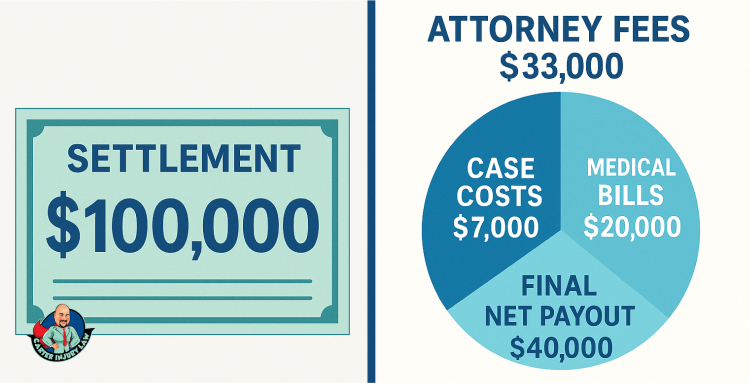
The lump sum settlement is by far the most common option you’ll come across. It’s straightforward, easy to understand, and typically the best choice for most cases. In simple terms, it means you receive a one-time payment that covers everything in your case.
For example, if your settlement is $100,000, that amount is meant to cover your injuries, damages, and lost wages. Everything you’ve gone through—from the moment of the accident to the ongoing impact on your life—is included in that lump sum.
"The lump sum is paid by the insurance company or the at-fault party."
"That $100,000 is yours to use as you need, after deductions for fees, costs, and medical bills."
This makes the lump sum a practical option, allowing you to manage the funds however you see fit, whether that’s paying for medical expenses, covering lost income, or simply getting back to normal life.
Watch the short video below where Rob Johnson breaks down exactly how a lump sum settlement works and what it means for your recovery:
When you receive your lump sum settlement, it’s important to understand that not all of it will be in your pocket right away. There are a few things that need to be covered first, but don’t worry, we’re here to help you navigate the process.
Attorney Fees
The first thing that will be deducted is your attorney’s fees. At Carter Injury Law, we work on a contingency fee basis, which means we only get paid if you win. These fees are typically a percentage of the settlement, and they are taken out of the lump sum before anything else.
Costs Associated with the Case
In addition to attorney fees, there are certain costs that come up during the case. This might include court filing fees, expert witness costs, or other expenses related to preparing your case. These costs will also come out of your settlement before you see the final amount.
Medical Bills
One of the things that sets us apart at Carter Injury Law is our approach to medical bills. We don’t just leave you to deal with these bills on your own. We work directly with your medical providers to reduce those costs, helping you keep more of your settlement in the end. This is something we’re very proud of and believe it’s one of the ways we truly add value for our clients.
We understand these numbers, these deductions—they can feel like too much all at once. But that’s why we’re here. While the system has its steps, its fees, its bills, none of it should weigh heavier than your healing. We take care of the details, the paperwork, the quiet negotiations behind the scenes. So you can do what matters most—breathe, recover, move forward.
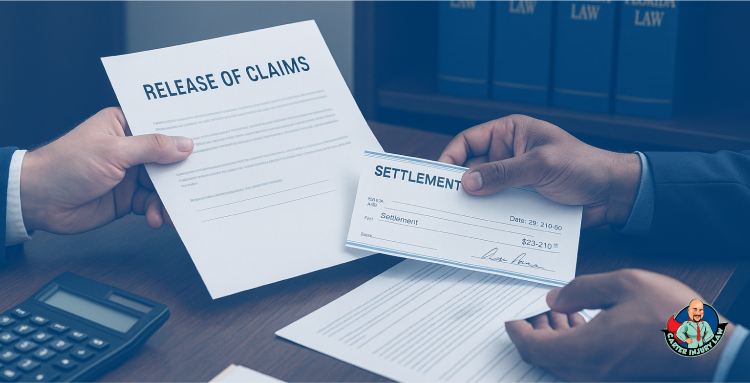
Once all the deductions have been made from your lump sum settlement, the next step is signing the closing statement. This is an important part of the process that ensures everything is accounted for and clearly outlined.
What Is a Closing Statement?
A closing statement is essentially a breakdown of your settlement. After we’ve covered all the necessary deductions—attorney fees, case costs, and medical bills—this document will show you exactly what’s been paid out and what remains for you. Think of it as the final summary of how the lump sum has been distributed.
Breakdown of the Closing Statement
The closing statement will list all of the payments that were made throughout the process, giving you a clear view of where your settlement money has gone. It will also show any remaining balance after all fees and expenses have been deducted, leaving you with a transparent understanding of your net settlement.
The Final Check: Your Net Settlement
Once everything is finalized, what’s left over is the final check you receive—the net settlement. This is the amount you’ve been working toward, the money that is yours after everything has been taken care of. It’s the payout you’ll use to cover your ongoing needs and start getting back to normal life.
Our Other Relevant Blogs You Would Find Useful:
Why Local Tampa Attorney is Vital for Winning Your Personal Injury Case
What Does Full Coverage Mean in Florida? Understanding the Misconception
How Long Will Your Personal Injury Case Take? Carter Injury Law Reveals the Truth
After everything is settled, there are just a few final steps before you get your check. While it’s the last part of the process, it’s crucial to understand what happens at this stage.
Release of Claims
The final step involves signing a release of claims. This is a legal document that clears the insurance company and the at-fault party from any future claims related to your case. Once you sign it, you're officially releasing them from any further liability. It’s an essential part of closing out the case, but don't worry—we’ll walk you through it, so you fully understand what you’re signing.
Receiving the Check
Once the release is signed and all the details are in order, you’ll receive the final settlement amount—minus the previously discussed deductions. This is the check you’ve been waiting for, the net settlement, which you can use as needed for your recovery, future expenses, or anything else that will help you move forward.
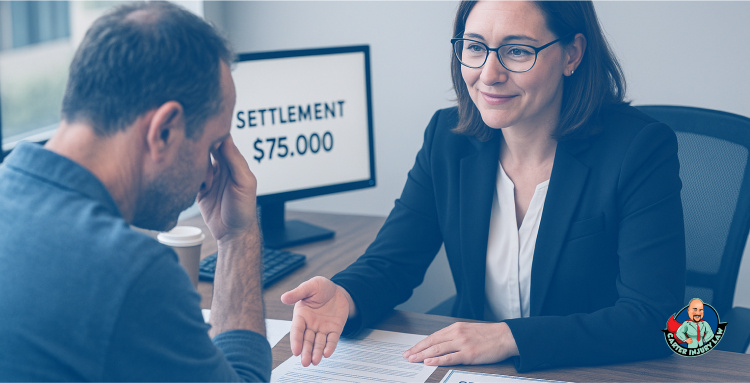
Sometimes the hardest part isn’t the injury itself, it’s what comes after. The paperwork, the calls, the waiting. The unknown. But you don’t have to sit in that uncertainty alone.
If you’re wondering what this all means for your case, or just need someone to walk you through it, we’re here. You can find us at CarterInjuryLaw.com or call us at 813-922-0228. No pressure—just answers, and a plan if you want one.
Thanks for spending a few minutes with us. When you’re ready, we’ll be here to help you take that next step forward.

They say old age brings peace, a quiet dignity earned after decades of noise. But what happens when that peace is betrayed behind closed doors, when the people meant to care are the ones who cause harm? It’s not always loud. Sometimes it’s a bedsore that’s been ignored. Other times, it’s a bruise that shouldn’t be there or an empty bank account that no one can explain.
Nursing home abuse doesn’t always scream. We’ve seen what it does to families. We’ve seen the guilt, the anger, the disbelief. And we’ve also seen what it takes to fight back.
So if you’re here wondering what happens next… If you suspect something’s wrong and you’re not sure what to do about it, you’re in the right place.
When you place a loved one in a nursing home, you’re putting your trust in the hands of people you assume are trained, responsible, and above all— caring. But sometimes, that trust gets shattered. And abuse isn’t always obvious. It takes many forms. Here’s what you should be looking out for.
Neglect and Abandonment in Nursing Homes: The Quiet Harm
This is one of the most common issues we see. It’s not always dramatic, but it’s devastating. Think about someone who can’t move on their own, lying in bed for hours or days without being turned. That’s how bedsores start, and they can become serious medical problems if left untreated.
We’ve seen cases where someone tries to get up, falls, and stays on the floor because no one checked on them. That’s not an accident; that’s neglect. Caretakers might be off watching TV, on a smoke break that never ends, or just flat-out ignoring their responsibilities. Whatever the excuse, it’s unacceptable.
Physical Abuse: When Care Turns Violent
This one is more direct. Physical abuse can look like unexplained bruises, bleeding, cuts, swelling, or worse. It can happen in a moment of frustration, or it can be a repeated pattern. Either way, there’s no excuse for putting hands on a vulnerable senior in anger or punishment.
And just because someone doesn’t report it doesn’t mean it didn’t happen. Many elders won’t or can’t speak up. So if something feels off, trust your instincts.
Sexual Abuse: The Unthinkable
We don’t like to talk about this one, but we have to. Sexual abuse happens in nursing homes, and it’s every bit as horrific as you’d imagine. These are often the most emotionally difficult cases, not just for the families, but for us too.
We’re not going into graphic detail here, but know this: if something seems wrong, if you see signs you can’t explain, or if your loved one’s behavior suddenly changes, you need to ask questions. This type of abuse needs to be confronted head-on, and the people responsible must be held accountable.
Financial Exploitation: Theft Disguised as Help
Sometimes the abuse doesn’t leave bruises—it drains bank accounts. We’ve seen staff members manipulate patients with cognitive decline into signing over checks, granting powers of attorney, or even changing their wills.
When someone’s mental state is compromised, they’re an easy target. And unfortunately, there are people out there who take advantage of that. Keep an eye on bank statements. If something doesn’t add up, don’t brush it off.
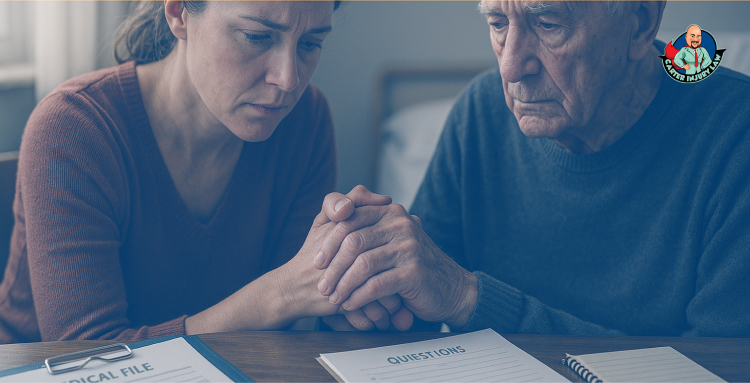
When someone you love is living in a nursing home, you are their biggest line of defense. You're not just visiting—you’re watching, listening, and protecting. And that vigilance can make all the difference.
Look Closer Than What They Show You
Don’t just sit by their bedside and chat for a few minutes—look. Really look. Check their arms, their legs, their back. Bedsores don’t always show up right away, and bruises can be hidden under clothing. If your loved one can’t tell you what’s going on, their body might.
Ask Questions, Even the Hard Ones
It might feel awkward, but ask. “Has anyone hurt you?” “Do you feel safe here?” “Has anyone touched you or taken anything from you?” If they can answer, give them the space and the comfort to do it. If they can’t, your job is to speak up on their behalf.
Talk to the Staff And Listen to What They Don’t Say
You don’t need to be confrontational, but pay attention to how the staff responds when you ask about care. Do they get defensive? Do they dodge your questions? You can learn a lot from how someone avoids eye contact or gives vague answers. If something feels off, it probably is.
Keep an Eye on the Money
This one catches a lot of people off guard. Review their accounts. Look for strange withdrawals or changes in who’s authorized to access funds. If your loved one suddenly has a new “friend” helping with paperwork or making financial decisions, that’s a red flag. Financial abuse can happen right under your nose if you’re not paying attention.
Trust Your Heart
At the end of the day, no one knows your parent, grandparent, or sibling like you do. If something feels wrong, you don’t need to wait for proof. You have every right to ask questions, demand answers, and, if needed, call a lawyer. That kind of intuition has helped families catch abuse early and stop it before it gets worse.
If you think you have a nursing home abuse case, it helps to know what’s ahead. This process can feel overwhelming, especially during an already emotional time, but we walk our clients through every step with care. Here’s how it usually goes:
The First Call Is Free And It Matters
We start with a consultation. No pressure, no cost, and no obligation. You tell us what happened, we ask some questions, and if it sounds like there’s something to look into, we dig deeper.
One of the first things we’ll do is request the nursing home’s insurance information. Florida law gives us the right to see what coverage they have that helps us figure out if this is a claim we can pursue and how to structure it.
Medical Records Tell the Story
Once we’ve confirmed there’s a potential case, we need to get our hands on the medical records. These records often show what the nursing home did or didn’t do and whether those choices led to harm.
If your loved one has passed, we may need to help you get an estate set up so we can access those records legally. That doesn’t mean you have to file a probate case or go through a big legal process. We can connect you with someone who handles that part. But getting that estate in place can help us move the claim forward with clarity. I’m sure this is already on your radar, but… Should You Accept an Insurance Company’s Offer to Pay Your Medical Bills After an Accident?
The Notice of Intent Starts the Clock
Before we can sue a nursing home in Florida, we’re required to send what’s called a Notice of Intent. It’s basically a formal letter saying, “We believe you caused harm, and we’re planning to file a lawsuit.”
Once that notice goes out, a 75-day countdown begins. During that time, both sides are allowed to request documents and conduct an informal investigation. Sometimes, they’ll ask for mediation. Sometimes, they ignore it altogether. Either way, this period gives us a window to gather facts and see if the case can be resolved without going straight to court.
Still wondering how this process works in real life? Attorney David Carter breaks it down in this short video—what happens when you call, what we look for, and how we begin building your case from day one.

Sometimes, despite our best efforts during that pre-suit period, the case doesn’t settle. Maybe the nursing home denies responsibility, maybe they lowball the offer, whatever the reason, we don’t stop there.
When It’s Time to File
If we don’t get a fair resolution during the pre-suit window, we move forward and file the lawsuit. That officially kicks off the litigation process. We don’t do this lightly but if it’s what your loved one deserves, we’re going all in.
Discovery: Digging for the Truth
Once the case is filed, both sides begin what’s called discovery. This is where we start asking questions under oath, like taking depositions of staff members, reviewing internal records, and gathering evidence about what really happened behind those nursing home doors.
This phase helps us build your case piece by piece, showing not just that something bad happened, but why it happened and who’s responsible.
Trial Is the Last Stop but It’s on the Table
Most of the time, these cases don’t go all the way to trial. We hope they don’t. A fair settlement, something that provides closure and accountability, is always the goal. However, if the nursing home won’t step up and take responsibility, we’re ready to take it to court. We’ve done it before, and we’ll do it again if that’s what it takes.

There’s no financial risk in calling us. We don’t charge for consultations. You don’t owe us a dime unless we take your case and win. We work on a contingency fee arrangement. That means you can get answers, guidance, and peace of mind without worrying about the bill.
Whether it’s the middle of the day or late at night, we’re here to listen. We’ll look over the records, ask the right questions, and help you figure out if you have a case. Even if it turns out you don’t, at least you’ll know. And if you do, you’ll have a team ready to fight like hell for your loved one.
Talking about what happened isn’t easy. For some families, the details are too painful to speak aloud. That’s okay. We’ve been through this with clients before, and we understand how to approach these conversations carefully. We ask the questions we need to build your case, but we never forget that behind every question is someone who’s been through hell.

They say a dog is man’s best friend. But what happens when that trust—so freely given, so deeply felt—is broken by the snap of a jaw?
It’s easy to brush off a dog bite, especially if the dog “didn’t mean it” or belongs to a friend. However, Florida law doesn’t deal in feelings. It deals in facts, and the truth is, dog bites are more common and more costly than most of us like to admit.
So what do you do when loyalty turns to liability? Let’s talk about the laws, the numbers, and the rights you may not know you have.
Dog bite claims come across my desk more often than you'd think. People are usually shocked—either that it happened to them or that it turned out to be more serious than they expected. But let’s talk about the actual numbers here because they paint a clearer picture than any story I could tell.
4.5 million dog bites happen in the U.S. every year.
Source - DogsBite
That’s not a typo. Millions. And that’s just what gets reported. A good chunk of these involve kids, neighbors, even the dog’s own family.
1 in 5 of those bites need medical attention.
Source - Centers for Disease Control and Prevention
Not just a little band-aid situation. We’re talking stitches, antibiotics, sometimes even surgery. The kind of injury that keeps you off work or sends your kid home from school with more than just a scrape.
The average hospital stay is approximately $18,200.
That’s a hefty bill. And it’s higher than what you'd see for a lot of other common injury-related hospital visits. Why? Because dog bites don’t just break the skin—they can tear through muscle, leave scars, or worse, lead to infections that require serious treatment.
There are 30 to 50 fatalities from dog bites every year in the U.S.
Source - National Library of Medicine
It’s not something we like to think about, especially because it’s often the most vulnerable—children and the elderly—who suffer the worst outcomes. And a lot of the time, it’s from dogs they know.
These numbers aren’t meant to scare you, but they should make you pause. Dog bites aren't rare, and they’re not always minor. When they happen, they deserve to be taken seriously.
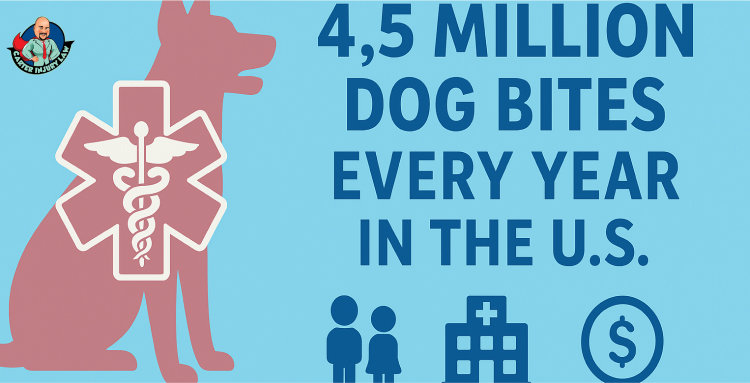
Not all injury cases are created equal. If you’ve ever been involved in a car accident or a slip-and-fall, you know how much time is spent proving who was at fault. But with dog bites? It’s a different ball game.
Florida follows a “strict liability” rule when it comes to dog bites.
What that means is if a dog bites you, the owner is usually responsible. Even if the dog has never bitten anyone before and even if the owner took precautions. We don’t have to prove that they were careless or that the dog had a history of aggression. That alone sets dog bite cases apart from most other personal injury claims.
Compare that to a car accident. There, you’ve got to dig into traffic laws, eyewitness accounts, maybe even camera footage. Same goes for a slip-and-fall—you need to show that the property owner knew about the danger and failed to fix it. That’s not the case with dog bites.
Florida law only covers actual bites.
That’s right. The dog has to bite you. If the dog jumped on you and knocked you down, even if you broke your wrist, it wouldn’t fall under Florida’s strict liability dog bite statute. That could still be a case, but now we’re talking about proving negligence again.
So yeah, dog bite cases are unique. They come with their own set of rules—rules that, if you understand them, can make your claim.
People often assume dog bites are random, but the numbers tell a different story. There’s a pattern and knowing who’s most at risk can help you stay one step ahead.
Let’s start with kids.
Children between the ages of 5 and 9 are the most likely to be bitten.
Source - National Institute of Health
And it’s not because they’re doing anything wrong. Kids are naturally curious and smaller in size, which unfortunately makes them more vulnerable in these situations. A bite that might be minor for an adult can be a serious injury for a child.
Another common misconception? Those dangerous dogs are always strangers.
77% of dog bites come from dogs the victim knows.
Source - Safer America
That includes family pets, neighbors’ dogs, even ones you’ve played with before. It’s not about breed or background—it’s about proximity and behavior that can change in a split second.
Also worth noting:
Males are more likely to be bitten than females.
Households with two or more dogs are five times more likely to experience a bite.
Source - National Institutes of Health
Dog bites don’t always come from the usual suspects, and they don’t always happen the way you think.
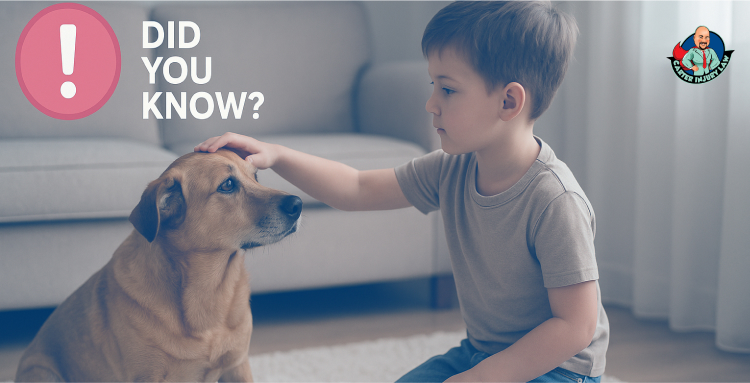
Most dog bite cases we see aren’t from vicious attacks in a dark alley. They’re from familiar settings—living rooms, backyards, playdates. The dog wasn’t “aggressive”… until it was.
One common thread? Roughhousing that escalates.
“Dogs are playing until they’re not.”
A tail wag turns into a warning growl, and before you know it, someone gets hurt. It happens quickly, and often no one sees it coming.
Children, especially those who’ve grown up around the dog, are another high-risk group. They tug tails, hug too tightly, or get too close while the dog’s eating—without realizing they’re pushing boundaries. These interactions aren’t always malicious. But in the eyes of a dog, it’s a provocation.
Territorial behavior is another major trigger.
A knock at the door, a stranger entering the yard, or even someone approaching the owner can put a normally calm dog on high alert.
And then there are cases where someone tries to do the right thing, like breaking up a dogfight or stopping aggressive behavior, and gets bitten in the process. These are some of the most legally complex situations, especially if the bite wasn’t directly intended for the person injured.
Let’s clear something up: dog bites aren’t just a “big dog problem.” A lot of people assume it’s the Pit Bulls, Rottweilers, or German Shepherds they need to fear. However, walk into any ER and ask around; you’ll hear stories about Chihuahuas, Jack Russells, even Dachshunds doing serious damage.
Small dogs bite too: Chihuahuas, Jack Russells, Doxies.
These little guys might not always send you to the hospital, but they bite more often than people think. The difference is that smaller dogs are less likely to cause severe injuries, which means they fly under the radar when it comes to public perception.
On the flip side, larger breeds carry a reputation and sometimes that reputation influences the law. Breed-specific legislation (BSL), which bans or restricts certain dogs just because of how they look, sounds good on paper. However, the data tells a different story:
Laws targeting ‘dangerous’ breeds don’t reduce overall bite incidents.
Source - American Veterinary Medical Association
Why? Because it’s not about the breed. It’s about behavior, environment, and training. A well-socialized Pit Bull is far safer than a nervous, untrained small dog with a chip on its shoulder.
In the end, responsibility falls on the owner. Dogs need structure, discipline, and supervision—especially around kids or guests. The more educated and involved the owner is, the safer everyone around the dog will be.
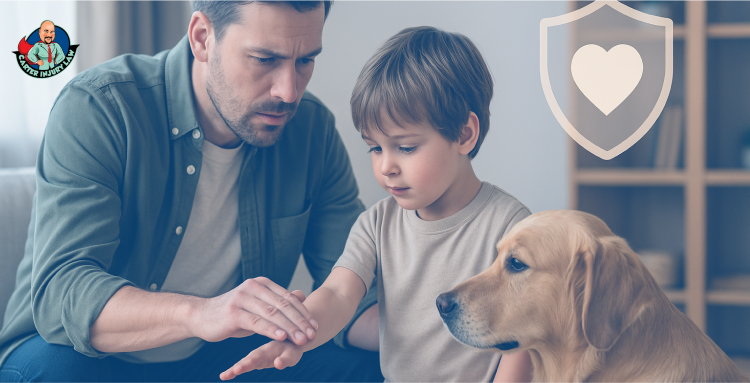
When we talk about dog bite cases in Florida, most people assume it’s an automatic win for the victim, but that’s not always true. There are certain legal defenses a dog owner can raise that may limit or even eliminate their liability.
One of the most commonly used defenses is signage. If the dog owner had a visible sign that says something like “Bad Dog” on their property, they might be able to avoid liability, but only under very specific conditions.
Signage requirements for ‘dangerous dog’ defenses don’t apply if the victim is under 6 years old.
That’s a key point a lot of people miss. You could have all the warning signs in the world, but if a child under the age of six is bitten, those signs won’t protect you in court.
Another major defense we see is provocation. If the dog was provoked—pulled, hit, stepped on, or otherwise agitated—the owner can argue that the bite was a direct reaction to the victim’s behavior. This is especially relevant in cases involving children, where rough or unintentional provocation happens more often than you'd think.
One of the first questions clients ask after a dog bite is, “Who’s going to pay for this?” The answer isn’t always simple and it often starts with insurance.
Dog bite claims make up a surprisingly large chunk of homeowner insurance payouts.
Dog bite claims account for over one-third of all homeowner liability claims in the U.S., totaling about $1 billion annually.
Source - Insurance Information Institute
That’s a huge number, and it tells us two things: these cases are more common than people realize, and the financial impact can be substantial. Depending on the severity of the injury and how much insurance is available, we’ve seen settlements as low as $8,000 and others that push into the $500,000+ range.
Now there’s a catch— not all homeowner policies in Florida cover dog bites. Some carriers exclude animal liability altogether, especially if the dog is considered a “high-risk” breed. That means even if the dog owner has insurance, it might not apply to the incident at all.
Many Florida homeowners’ policies exclude dog bite coverage, especially for breeds labeled as dangerous.
In those situations, we have to dig deeper. Is there a separate animal liability policy? An umbrella policy? Are there personal assets that could be pursued? These are the details that matter and they’re the ones we know how to find.
If you're wondering how we approach these cases, take a moment to watch this short video from Carter Injury Law. Where we break down how we investigate insurance coverage and fight to make sure our clients don’t end up stuck with the bill.
At the end of the day, prevention is always better than litigation. While we’re here to help after a bite happens, a lot of these situations are avoidable with a little foresight. Especially when it comes to children and pets.
Let’s start with the basics: teach your kids how to behave around dogs. This sounds simple, but you’d be surprised how often bites happen because a child got too close, pulled a tail, or interrupted a dog while it was eating or sleeping.
Education is the most effective way to reduce bite risk. Especially with kids under 10.
We always tell parents: no roughhousing. Dogs might tolerate it up to a point, but when that point is crossed, it’s too late. Even well-trained, gentle dogs have boundaries.
Another big one? Supervision. Never leave small kids alone with a dog. Yes, even if it’s the family dog you’ve had for years.
Most serious dog bites involving children occur when no adult is present.
Owners also have a role to play beyond just training. Spaying and neutering your dog can help lower aggressive behavior and reduce the risk of bites overall.
So if you're a parent, a pet owner, or both, the best thing you can do is stay proactive. Awareness, boundaries, and supervision go a long way in keeping everyone safe.

It’s easy to brush off a bite. Maybe it doesn’t seem so serious, or the dog was familiar. But here’s the thing: once a bite happens, the consequences can ripple in ways you might not immediately see.
Don’t wait until the situation escalates. Consult with an experienced attorney early on.
You might think, “It wasn’t that bad,” or “The dog was friendly.” But the truth is, legal options are still available. Florida law can be complicated when it comes to dog bites, and the way it’s handled can make all the difference, especially when it comes to medical bills or emotional trauma.
We offer free consultations. If you’re unsure, take the first step and reach out. We can guide you through the process, answer your questions, and let you know if you’re entitled to compensation.
The last thing you want is to miss an opportunity for justice simply because you didn’t ask the right questions.
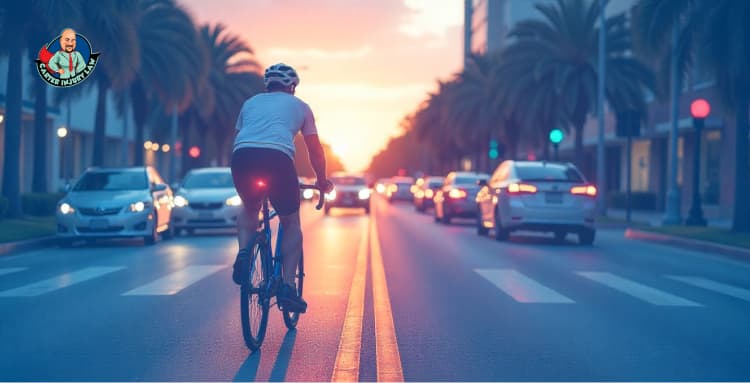
Even the most experienced cyclist can end up in trouble due to distracted drivers, rushed right turns, and narrow bike lanes that disappear just when you need them the most.
And in Florida, the stats don’t lie. Cycling accidents are more common and more serious than most riders think.
This isn’t meant to scare you. It’s meant to prepare you. Because once you understand the risks and your rights, you ride smarter. And if something goes wrong, you’ll know exactly what to do.
So let’s talk about it — the dangers, the steps to take, and the safety habits that just might save your life.
Let's be honest, Florida's roads were not designed with cyclists in mind. In cities such as Tampa, bike lanes frequently disappear without warning, intersections can feel like obstacle courses, and drivers may act as if they've never seen a bike before.
The infrastructure here leans heavily toward cars, leaving cyclists to deal with a variety of obstacles. Every ride requires increased awareness, from narrow lanes that cram you into traffic to intersections with limited visibility.
And the numbers back this up.
82% of bicyclist deaths occurred in urban areas.
Source — Insurance Institute for Highway Safety, 2022
This statistic underscores the risks cyclists face in urban settings like ours. It's a stark reminder that while we share the road, the playing field isn't level.
So, when you're out there, stay alert. Use bike lights, wear reflective gear, and always anticipate the unexpected. Your vigilance is your best defense on roads that weren't built with you in mind.

Let’s talk about the elephant in the room: cars. They're big, fast, and often oblivious to the presence of cyclists. In Florida, where urban sprawl meets congested traffic, this combination can be particularly hazardous.
Common scenarios? A driver makes an abrupt lane change without checking mirrors, or speeds through a turn without signaling. Sometimes, they simply don't see the cyclist until it's too late.
One of the most dangerous places for these interactions is at intersections.
27% of bicyclist deaths occur at intersections.
Source — Centers for Disease Control and Prevention, 2022
Intersections are complex environments where drivers are focused on other vehicles, traffic signals, and pedestrians. Cyclists can easily be overlooked, especially if they're not making their intentions clear.
So, what can you do?
Be Predictable: Ride in a straight line, signal your turns, and avoid sudden movements.
Stay Visible: Wear bright clothing during the day and reflective gear at night. Equip your bike with front and rear lights.
Make Eye Contact: Especially at intersections, ensure drivers see you before you proceed.
Avoid Blind Spots: Position yourself where drivers can see you, not tucked away beside large vehicles.
Remember, while you can't control the actions of drivers, you can take steps to make yourself more visible and predictable. These small actions can significantly reduce the risk of accidents.
Let’s talk about the kind of mistakes that can turn a peaceful ride into a trip to the ER — or worse.
Riding Against Traffic
It might seem like riding against traffic gives you a better view of oncoming cars, but it's a dangerous misconception. Drivers aren't expecting cyclists to come from the opposite direction, which can lead to sudden and severe collisions.
Ignoring Stop Signs and Traffic Lights
Blowing through stop signs or red lights might save you a few seconds, but it's not worth the risk. Intersections are hotspots for accidents, and obeying traffic signals is crucial for your safety.
Wearing Headphones While Riding
Listening to music or podcasts can be enjoyable, but it significantly reduces your awareness. You need to hear the world around you — horns, sirens, or a car approaching from behind. Stay alert; your ears are as important as your eyes on the road.
Cycling Under the Influence
Alcohol impairs your judgment, balance, and reaction time — all essential for safe cycling. It's not just illegal; it's deadly.
Among bicyclists ages 16 and older who were killed in 2022, 21% had blood alcohol concentrations (BACs) at or above 0.08%.”
Source — Insurance Institute for Highway Safety, 2022
Remember, you've got to ride like they don't see you — because sometimes, they don't. Stay sober, stay alert, and stay alive.
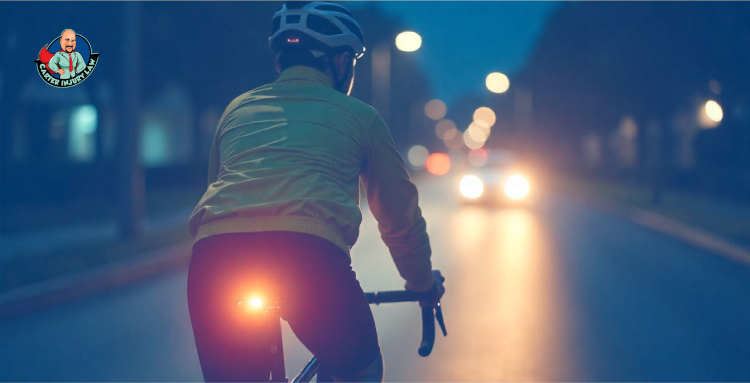
Riding your bike at night isn't just a peaceful experience; it's a high-stakes game of visibility. As daylight fades, so does your presence on the road.
The hours between 6 p.m. and 9 p.m. are particularly perilous.
21% of bicyclist deaths in 2022 occurred between 6 p.m. and 9 p.m.
Source— Insurance Institute for Highway Safety
This statistic underscores the importance of being seen.
So, how do you make yourself visible?
Front Light: A white light on the front of your bike ensures that oncoming traffic sees you.
Rear Light: A red light at the back alerts drivers approaching from behind.
Reflective Gear: Reflective tape on your pedals and clothing catches headlights, making you more noticeable.
Remember, visibility is about making yourself as conspicuous as possible. Wear bright clothing, use reflective accessories, and always assume that drivers can't see you.
Let’s talk about something that might not seem like a big deal until it is.
You wouldn't drive without a seatbelt, right? So why ride without a helmet?
It's not just about obeying the law; it's about protecting your most valuable asset—your brain.
Only 17% of fatally injured bicyclists were wearing helmets at the time of their crash.”
Source — Department of Transportation
That statistic isn't just a number; it's a wake-up call.
Think about it, a helmet can be the difference between a minor injury and a life-altering trauma. Even on short rides, accidents can happen in the blink of an eye.
So, before you hop on your bike, make sure your helmet is snug and secure. It's a simple step that can save your life.
Want to hear this straight from the source? Watch this quick video from Attorney David Carter

Even the most cautious cyclist can find themselves in an unexpected situation. When that happens, knowing the right steps to take can make all the difference.
Prioritize Safety
First and foremost, ensure you're out of harm's way. If you're able, move to a safe location away from traffic. Then, call 911 to report the incident and request medical assistance, even if injuries seem minor.
Document the Scene
Use your phone to take photos of the accident scene, your bicycle, any vehicles involved, and any visible injuries. Gather contact information from witnesses and note the time, location, and circumstances of the accident.
Mind Your Words
It's natural to feel shaken, but avoid making statements that could be interpreted as admitting fault. Stick to the facts when speaking with others at the scene and with law enforcement.
Only approximately 10% of all bicycle crashes are reported to the police.
Source— Accident Analysis & Prevention Journal
This statistic highlights the importance of reporting accidents, no matter how minor they may seem. What feels like a small incident now could have implications for your health and legal rights later.
Additional Relevant Blogs You May Find Useful:
Why Local Tampa Attorney is Vital for Winning Your Personal Injury Case
How Long Will Your Personal Injury Case Take? Carter Injury Law Reveals the Truth
Even the most seasoned cyclists can find themselves in unexpected situations. If you're involved in an accident, especially one involving injuries, vehicles, or insurance disputes, it's crucial to know when to seek legal assistance.
Accidents can be complex, and determining fault isn't always straightforward. If you've sustained injuries, if a vehicle was involved, or if you're facing resistance from insurance companies, it's time to consult an attorney. Legal professionals can help navigate the intricacies of your case, ensuring your rights are protected.
Adults between the ages of 55 to 59 have the highest death rates in bicycle accidents.”
Source — National Safety Council
This statistic underscores that experience doesn't make one invincible. Even seasoned riders are vulnerable, and legal support can be invaluable in the aftermath of an accident.
Our firm offers a free consultation to discuss your case. We operate on a contingency fee basis—meaning you don't pay unless we win your case. Our team will help you navigate insurance claims, manage medical bills, recover lost wages, and address other challenges that may arise.
Here’s the truth —we’d rather you never rely on our services. If every cyclist made it home safely, if every driver paid attention, if every street was built with bikes in mind — we wouldn’t have to have this conversation. But until that day comes, we ride with a little more caution, a little more awareness, and the knowledge that even doing everything right doesn’t guarantee a smooth ride.
And if something does go wrong — if you’re shaken, if you’re hurt, if someone tries to pin blame where it doesn’t belong —don’t go it alone.
We’re not here to judge. We’re not here to pressure you. We're here to help. To listen. To guide you through the mess and make sure you're not left carrying the weight of someone else’s mistake.

No one plans for pain. We plan for birthdays, vacations, and even retirement, but not for the moment a car runs a red light or a distracted driver glances away for a second too long. In that instant, time slows. Sounds distort. And nothing—nothing—feels the same again.
Tampa is full of law firms with glossy ads and bold claims. However, when it’s your life, your health, and your future on the line, you’re not looking for a billboard. You’re looking for someone who sees the human behind the case file. Someone who will stand beside you when the system feels too big to face alone.
So, let’s talk about how to find the kind of law firm that won’t just represent you but will fight for you like it’s personal.
In personal injury law, being “qualified” isn’t just about passing the bar exam or hanging a diploma on the wall. It’s about having the right kind of experience — the kind that holds up in a courtroom when negotiations fall apart.
Most cases do settle out of court, yes. But what happens when the insurance company refuses to play fair? That’s when you need more than a polished phone voice — you need a litigator. A firm that knows how to stand up in front of a jury and argue your truth with clarity, strategy, and strength.
Only about 4% to 5% of personal injury cases in the U.S. actually go to trial.
(Source: U.S. Department of Justice, Bureau of Justice Statistics)
But when they do, your attorney’s courtroom ability can be the difference between full compensation and walking away with less than you deserve.
Carter Injury Law prepares for everything. That means understanding the nuances of Florida tort law, staying in step with ever-evolving state regulations, and knowing when it’s time to shift gears from negotiation to litigation.
Our team is focused exclusively on personal injury — not distracted by other practice areas. We know how to build a case from the ground up and how to pursue it when it matters most: under the scrutiny of a judge or jury.
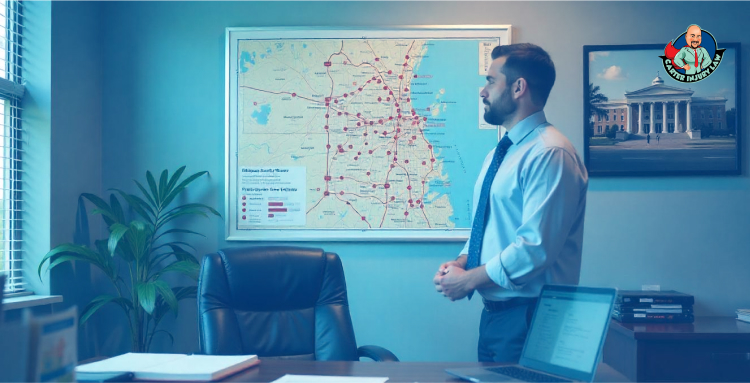
The law may be written in books, but it’s practiced in courtrooms and every courtroom has its own rhythm, personalities, and unwritten rules. That’s why choosing a personal injury law firm with boots-on-the-ground experience in Tampa is a strategic choice.
From understanding how local judges interpret procedural motions to recognizing how specific insurers handle claims in Hillsborough County, local knowledge can shape the outcome of your case before you ever step into mediation or court.
In 2022, Hillsborough County reported 28,020 traffic crashes, including 212 fatalities.
(Source: Florida Highway Safety and Motor Vehicles - Crash Dashboard)
Behind each statistic is a story, and navigating those stories through the local system takes more than just legal training. It takes familiarity with this community.
Carter Injury Law doesn’t just serve Tampa — we live it. We know the stretch of I-275 that sees too many rear-end collisions. We understand which medical providers companies like to question, and we’ve built working relationships within the Hillsborough County legal system that help us move cases forward without unnecessary delays.
When you're up against large insurance companies with deep resources, every bit of local insight becomes an edge. We use that edge to protect our clients, maximize their compensation, and guide them through the legal process with confidence.
After an accident, it’s not just your body that’s bruised—it’s your sense of stability and, sometimes, your trust in the system. In those moments, legal representation becomes more than paperwork and payouts. It’s about being heard.
Sadly, some law firms treat clients like numbers. You sign a form, maybe shake a hand, and then—you never see the attorney again. Your case is passed off to a paralegal or a junior associate who juggles dozens of files, and your calls start going unanswered.
That’s not just bad business—it’s deeply impersonal at a time when empathy is everything.
62% of legal clients say poor communication is their number one complaint.
(Source: Clio Legal Trends Report, 2023)
That means more people are frustrated by silence than by courtroom losses.
And we get it. You don’t just want someone who knows the law. You want someone who sees you.
Attorney David Carter and Rob Johnson personally handle every case. From your first call to the final decision, they stay in the loop and keep you in the loop too. Because we believe being a great lawyer isn’t just about legal wins; it’s about showing up for people when they need it most.
So if you're looking for more than a firm that treats you like a case file—if you want someone who actually listens to your story—you’ll find that here.

One of the first worries people have after an accident isn’t just about injuries — it’s about money. How do you pay medical bills, keep up with rent, take care of your family, and still afford a lawyer?
The answer is, you don’t have to.
We work on a contingency fee basis. That means you don’t pay us a dime unless we win your case. No retainers, no hourly billing, and definitely no surprise charges down the line. Our payment comes out of your settlement, not your pocket.
About 59% of Americans wouldn’t be able to cover an unexpected $1,000 expense.
(Source: Bankrate Survey)
When you’re injured, the financial pressure is real, and legal representation shouldn’t make it worse.
We know how quickly expenses pile up after an accident. Hospital visits, missed work, childcare, car repairs — it adds up fast. That’s why we’ve built our practice around reducing your risk, not adding to it.
When we say, “You focus on healing, we’ll take care of the rest,” we mean it and we mean all of it. From the first consultation to the final resolution, your financial security stays protected.
Choosing a personal injury law firm isn’t just another item on your post-accident checklist. It’s a decision that can change the course of your recovery and your finances.
When you choose the wrong firm, the consequences are very costly.
Studies show that injured individuals who hire experienced attorneys can recover up to 3.5 times more compensation than those who go it alone or settle with inexperienced counsel.
(Source: Insurance Research Council)
However, beyond the dollar signs, there’s the emotional toll:
Settlements that don’t cover long-term medical care
Legal missteps that delay your case or get it thrown out
Feeling dismissed, confused, or completely in the dark
When a lawyer doesn't understand what you're going through or, worse, doesn't care—it deepens the trauma.
We know what’s on the line for you—your health, your livelihood, and your future. That’s why we pursue justice that lasts. We uncover every detail, calculate the full impact of your injuries, and make sure no penny gets left on the table.
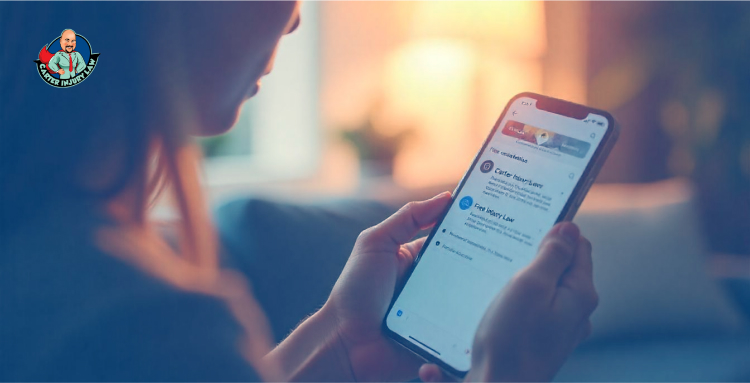
Asking for help after an injury is one of the strongest, most courageous decisions you can make. Especially when everything feels out of your control: your health, your income, and your future. But there’s one thing you still get to decide — what you do next.
Reaching out to an experienced personal injury lawyer isn’t just about compensation. It’s about reclaiming control over your future.
More than 50% of injured individuals delay seeking legal help out of fear or uncertainty.
(Source: American Bar Association, Client Intake Study)
However, the longer you wait, the harder it becomes to preserve evidence, build a strong case, and protect your rights.
We’re here to break down those fears. Our free consultation is pressure-free, judgment-free, and always focused on you. Whether you’d rather text, call, or stop by our Tampa office —we’ll meet you where you are.
Behind every claim is a real person. And we don’t take that lightly. When we say we’ll fight for your recovery like it’s our own, it’s not just a promise. It’s how we practice law — with heart, grit, and relentless focus on getting you the justice you deserve.
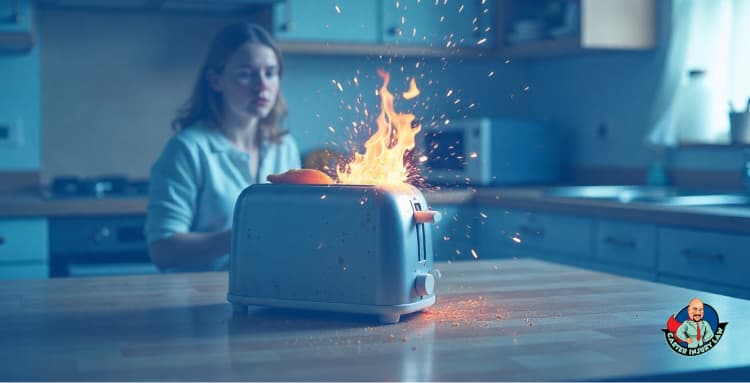
We live in a world where everything is packaged, promoted, and pushed to us as if it were essential—convenient, safe, and tested. However, every so often, something slips through. A product that was supposed to make life easier does the opposite. It hurts. It malfunctions. It breaks, not just physically, but trust too.
No one buys a toaster expecting it to explode or a toy expecting it to be dangerous. But here we are, surrounded by shiny things, not always knowing which ones might turn against us.
The question isn't whether accidents happen. They do. The real question is, when they do, who takes responsibility?
Product liability is the legal concept that holds companies accountable when they sell something that’s dangerous or defective and it ends up hurting someone. We’re not talking about freak accidents or user error—we’re talking about a product that never should’ve made it to the shelf in the first place or one that wasn’t built with safety in mind.
If a product malfunctions and causes injury, someone has to take responsibility. And that someone is usually the company that made it, designed it, or sold it.
Companies Have a Duty to Put Safety First
If you’re going to put a product out there for the public to use, then you need to make sure it’s safe. That’s not just good business—it’s the law.
We’re not expecting perfection, but we are expecting due diligence. That means proper design, thorough testing, clear instructions, and warnings where they’re needed. If a company skips any of those steps and someone gets hurt because of it, that’s where product liability comes in.
The Law Steps in When Companies Don’t
At the end of the day, product liability laws exist to protect the public. They’re there to say, “Hey, if you’re putting something out into the world that people are trusting with their bodies, their homes, or their kids, you better do it right.”
These laws don’t just help the injured get compensation—they’re also a powerful way to make sure manufacturers, designers, and sellers take their jobs seriously.
More for you: How to Secure Personal Injury Compensation in Florida Expert Tips from Carter Injury Law
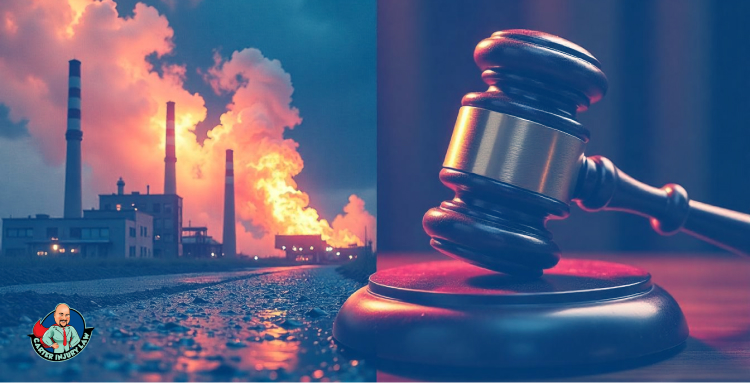
Product liability laws are about prevention. When companies know they can be held accountable for putting out dangerous products, they’re a lot more likely to slow down, double-check, and do things right the first time. That kind of pressure keeps harmful or defective items off the shelves before anyone gets hurt.
They Force Companies to Step Up
Without consequences, some companies cut corners. These laws make sure they don’t. When there’s a real risk of being sued for negligence, manufacturers and sellers take their responsibilities a whole lot more seriously. It’s not just about avoiding court—it’s about doing right by the people who trust them.
They Shine a Light on Where Products Really Come From
In today’s world, a lot of stuff is made overseas. And sometimes, the safety standards in those places aren’t up to par. Product liability laws put pressure on U.S. companies to know exactly what they’re importing and who they’re buying from. That added layer of accountability encourages transparency because they know if something goes wrong, they can’t just blame a factory overseas.
They Protect People from Corporate Carelessness
Big companies have teams of lawyers, insurance policies, and mountains of money. The average person doesn’t. Product liability laws give regular people a fighting chance when they’ve been hurt by something that should’ve been safe. These laws exist to say, “Your injury matters. And someone’s going to answer for it.”
They Even the Odds
Most of the time, you’re not just going up against a brand name. You’re going up against a corporation that’s bigger, richer, and has more resources than you’ll ever have. Product liability laws balance that power. They give individuals a real shot at justice, even when the odds feel stacked against them.
When someone gets hurt by a product, the law breaks it down into three main types of claims. Each one gets to the root of why that product was dangerous. Let’s walk through them.
Manufacturing Defects – Something Went Wrong on the Line
This one’s all about mistakes during production. The design might’ve been solid, the instructions might be clear—but something went sideways while the product was being made.
Think of it like when you buy a car, and the brake pads are defective on just your vehicle. Or you open a box of cereal and find shards of plastic in it. That’s a manufacturing defect—something went wrong that shouldn’t have and now the product is dangerous because of it.
These are one-offs, but they’re serious. Just because it’s rare doesn’t make it any less harmful.
Design Defects – It Was Built Wrong from the Start
Unlike manufacturing defects, design defects affect every single product that comes off the line. The issue is baked into the blueprint. It’s not that something broke during production—it’s that the product was never safe to begin with.
For examples, A space heater that catches fire after 10 minutes of use. A children’s toy with small parts that pop off way too easily and become choking hazards. A lawnmower that doesn’t shut off when you release the handle.
In these cases, it’s not about a fluke. It’s about a flawed design that never should’ve passed inspection.
Marketing Defects – When Warnings Are Missing or Misleading
Even if a product is made correctly and designed well, it can still be dangerous if people aren’t properly warned about the risks. That’s where marketing defects come in—this is about failure to warn or poor instructions.
Suppose a medication label that doesn’t list a serious side effect, a power tool with no mention of the safety gear needed to operate it, or a cleaning product with no warning that it’s toxic if inhaled.
If the average person wouldn’t know about the danger—and the manufacturer didn’t make that danger crystal clear—that’s a marketing defect. And when someone gets hurt, it’s on the company for keeping them in the dark.

Strict liability is a legal concept that really matters in product liability cases—and it’s one of the most powerful tools a victim has. Let’s break it down.
You Don’t Have to Prove Negligence
This isn’t like a car accident where you have to show someone was texting or speeding. With strict liability, the question isn’t how careful the company was. It’s about, “Was the product defective, and did it cause harm?”
If the answer to both is yes, then there’s a valid claim. You don’t need to prove the company was careless—you just need to show the product failed in a way that hurt you.
Defect + Injury = Case
The law says if a company puts a defective product out into the world and someone gets hurt, that’s enough to hold them accountable. The focus stays on the product, not the company’s intentions.
That’s important because it means victims aren’t stuck chasing down emails, warning signs, or employee screwups. If the product is unsafe and you’re injured, that’s the core of the case.
Everyone in the Chain Can Be Responsible
Strict liability doesn’t stop at the manufacturer. Distributors and sellers can also be held accountable—yes, even if they didn’t make the product.
That includes big-box stores, third-party sellers, and even international manufacturers. It doesn’t matter if the product came from overseas or was sold by a small shop—if it ended up in your hands and caused you harm, they can be brought into the case.
Every state has its own spin on the rules when it comes to product liability—and Florida? We’ve got a rule that can seriously impact your ability to recover compensation. It’s called comparative fault, and if you’ve been injured by a defective product, you need to know how it works.
As of March 25, 2023, Florida follows a modified comparative fault rule. What does that mean in plain English?
If a jury finds that you were more than 50% at fault for your own injuries, you can’t recover any money. Zero. Even if the product was defective. Even if someone else should’ve shared the blame. If you're over that 50% line, the court shuts the door on your case.
This isn’t just about car crashes or slipping on a wet floor. It applies to product liability cases too—like when a tool malfunctions, a household appliance catches fire, or a toy injures a child.
Want to hear it straight from the source? Watch the explanation of what product liability means and why strict liability matters.
Want to hear it straight from the source? Watch the explanation of what product liability means and why strict liability matters.

When a product fails and someone gets hurt, it’s not just frustrating—it’s scary. Most people don’t plan for that kind of thing. So if it happens to you or someone you love, here’s what you need to do—step by step.
Step One: Get Medical Help—Right Away
Your health comes first. Before anything else, go see a doctor. Even if you think the injury isn’t “that bad,” let a medical professional take a look. Some injuries take time to show up, and a delay in treatment can hurt both your recovery and your legal case. So don’t wait. Get checked out.
Step Two: Don’t Toss the Product
It might be tempting to throw the thing away—especially if it scared you or hurt your kid. But don’t do it. That product is evidence. Whether it’s a broken appliance, a recalled food item, or a toy that malfunctioned—hang on to it. Put it somewhere safe, because we may need it later to prove what went wrong.
Step Three: Document Everything
Snap photos. Take videos. Save your receipts. If there’s a warning label or packaging, keep that too. Write down what happened while it’s still fresh in your mind—where you were, what you were doing, how the product failed, and how you were hurt. The more you can document now, the stronger your case will be down the line.
Step Four: Consult With a Lawyer
Once you’ve gotten medical care and preserved the product, it’s time to speak with a lawyer who understands product liability. Not every injury turns into a lawsuit, but you won’t know your options until you talk to someone who does this for a living. A good lawyer can walk you through your rights, explain the process, and help you make an informed decision about what to do next.
And remember—big companies have teams of lawyers ready to protect their bottom line. You deserve someone in your corner too.
Another insight to learn: What to Do After a Car Accident in Florida with Out of State Insurance
Most of us don’t buy things expecting them to hurt us. We assume that what’s on the shelf—or online—is safe. However, when a company cuts corners, skips safety checks, or fails to warn people about dangers they knew were there; that’s not just a mistake. That’s negligence. And someone needs to hold them accountable.
We’re not afraid to take on big manufacturers, overseas suppliers, or corporate legal teams. If you’ve been injured by a defective product—whether it’s something you used at home, ate at the table, or gave to your child—we’re here to listen, investigate, and fight for you.
Give us a call. Let’s talk about what happened. And if there’s a case, we’ll walk you through every step—clearly, honestly, and with your best interest at the center of it all.

We talk a lot about justice for the injured. About what to do when someone hits you, hurts you, leaves you with bills and questions. But what if you're the one who caused the damage? What if it really was your fault?
It’s uncomfortable, sure. Maybe even embarrassing. However, it’s also real, and it happens more often than people like to admit. The truth is, there’s a process for this too. And it starts with not hiding from it.
Let’s talk about what happens next.
Alright, let’s start at square one — your insurance. Because once you're in a crash and it’s your fault, the first question becomes: What kind of protection did you actually buy?
Bodily Injury Coverage: This One’s Big
This is the coverage that steps in if you’ve hurt someone. And if you don’t have it? Your insurance company’s not going to help. They’re not paying out, they’re not hiring a lawyer, and they’re certainly not defending you in a lawsuit.
A lot of people skip this to save money — big mistake. You’ll wish you hadn’t.
Property Damage Coverage: Florida’s Bare Minimum
Every auto insurance policy in Florida includes at least $10,000 in property damage coverage. That’ll go toward fixing someone else’s car if you caused the crash. But just know — $10K doesn’t go far when vehicles are totaled.
Why the Insurance Company You Pick Matters
Not all insurance companies are created equal. There are the good ones that pick up the phone, assign an adjuster quickly, and start handling the claim like they’re supposed to.
And there are the “cut-rate” companies. The cheap ones. They don’t answer calls, they drag their feet, and when it’s time to protect you? They disappear. That’s not who you want on your side when someone’s threatening to sue.
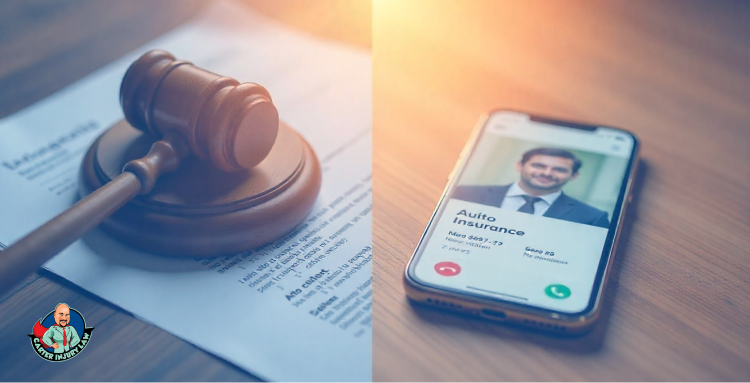
You’ve been in a wreck, and it was your fault. Now what? Simple — don’t wait around. Call your insurance company right away. The longer you wait, the worse this gets.
Why You Need to Call ASAP
There’s no trophy for “waiting it out.” Your insurance company can’t help you if they don’t know what happened. The faster you report the accident, the sooner they can open a claim and start protecting you.
Delaying just gives the other side a head start.
Your Obligation to Cooperate
This isn’t optional. When you bought your policy, you agreed to work with your insurance company if something goes wrong. That means answering their calls, giving a statement, and helping them evaluate the situation.
If you blow them off or go silent, they can walk away from your defense. Don’t give them that excuse.
Give Them the Full Picture
Send in everything you’ve got — photos from the scene, dashcam footage if you have it, any videos, witness info, even your own notes about what happened.
The more details they have upfront, the better they can protect you. Don’t assume they know anything. Make sure they do.
You’ve called it in, given them everything they need—now let them do their job. That’s what you’ve been paying them for.
They Take Over From Here
Once the claim is reported, your insurance company steps in. They’re the ones who should be talking to the other driver’s lawyer and insurance company—not you. That’s a battle you don’t want to fight alone.
So let your adjuster carry that weight. That’s the whole point of having coverage.
They’ll Deal With the Legal Side Too
If the other side sends a demand letter or if a lawsuit gets filed, your insurance company is supposed to respond. They’ll either try to settle or assign a defense attorney to represent you. And no—you don’t have to find that attorney yourself (at least not right away).
Why “Policy Limits” Are a Big Deal
Your insurance company only has to protect you up to the amount of coverage you actually bought. That’s called your policy limits.
If the other side wants more than that—say you’ve got $50K in coverage and they want $100K—you could personally be on the hook for the difference. That’s why it’s smart to make sure your insurance isn’t just cheap—it’s enough.
A must-read for you: Should You Take the First Offer from an Insurance Company?
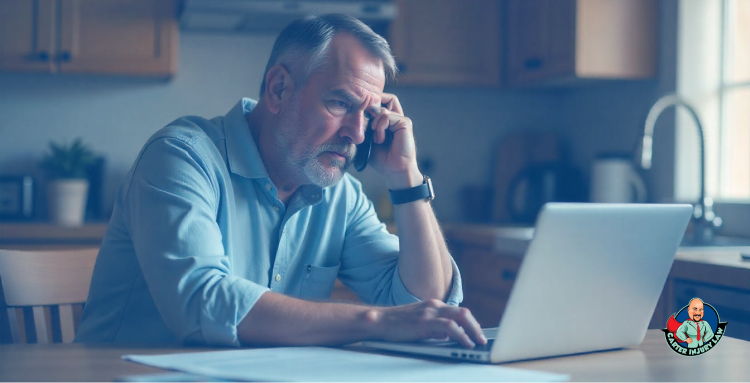
Sometimes, doing everything right still isn’t enough. If the other side thinks your insurance coverage isn’t going to cut it, you’ve got to start thinking about protecting yourself—because nobody else will.
What If They Want More Than Your Policy Covers?
Let’s say you’ve got $50,000 in bodily injury coverage, and the other party’s attorney says, “That’s not enough. We want $100,000.” Now they’re looking at you to make up the difference. That’s called an excess judgment—and it’s exactly what you want to avoid.
Tell Your Insurer to Offer the Full Policy Limits—In Writing
If a demand comes in and it’s within your coverage limits, tell your insurance company—clearly and in writing—to offer the full amount. Not just part of it, not to play games—the full limit.
Say, “Protect me from any judgment beyond this coverage. I want you to offer the policy limits now.” Put that in an email, send a certified letter, and keep records. It shows you tried to resolve it the right way, and that matters if this thing ends up in court.
Sometimes, it’s easier to understand your options when someone explains it to you face to face. Watch it to get real answers from someone who handles these cases every day.
So now it’s gotten real. You’ve been served. This is the part where you don’t want to wait around.
What Does It Mean to Be “Served”?
Being served means someone physically hands you legal papers—usually a complaint and a summons—saying you’re officially being sued. You’ll know it when it happens. And once it does, the clock starts ticking.
You’ve Got 20 Days to Respond
Florida law gives you 20 days to file a response once you’ve been served. That’s not a lot of time. You can’t afford to let that deadline slip by, because if you do, the other side can move for a default judgment—and now you’re in a worse spot.
Get the Lawsuit to Your Insurance Company — Fast
As soon as you're served, get those papers to your insurance adjuster. Don’t just call—email the documents, send them by certified mail, or do whatever you need to do to create a paper trail. Keep a copy for yourself too.
You’re not the one who has to respond to the lawsuit—your insurance company is. However, they can’t do that if you don’t get them the paperwork. It’s part of your duty to cooperate under the policy.
More for you: How to Handle Out-of-State Car Insurance Claims in Florida Accidents

Alright, so you’ve turned over the lawsuit to your insurance company. Now what? Let’s walk through what comes next once things start moving in the legal system.
Your Insurance Company Hires the Lawyer — Not You
As part of your policy, your insurance company is required to provide a defense. That means they’ll assign an attorney to your case, and they’re the ones who get to pick who that attorney is—not you.
You don’t get to shop around. You don’t get to say, “I want this guy I saw on TV.” They make that decision, and you’re expected to work with whoever they hire.
Watch Out for In-House Attorneys
Some insurance companies use what are called in-house attorneys—lawyers who work directly for them. And while that might sound convenient, you have to remember: their paycheck comes from the insurance company, not from you.
The Insurance Company Covers the Legal Costs
The good news is your insurance company is on the hook for the legal defense. They’ll pay for the lawyer, the court costs, the expert witnesses—everything involved in defending the claim.
You’re not writing checks every week to keep your defense alive. That’s what you’ve been paying those premiums for all these years.